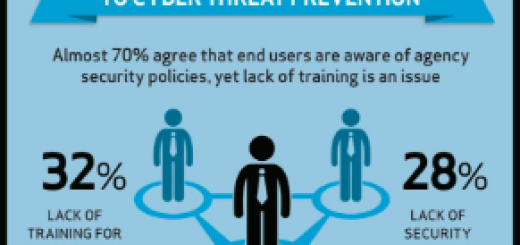Cresta is the Chief Marketing Officer for Shopperapproved.com and Trustguard.com. We recently did a survey that brought some great insights into why consumers prefer shopping online. Read more below….Feel free to share. The information we received through the study can give e-commerce merchants the edge they need to have a successful holiday season.
In order to improve your customer’s online shopping experience it’s important to first understand why they buy.
Reason for Study
Shopper Approved wanted to help online retailers understand why customers choose to shop online over going to their local shopping center or brick and mortar store. Once online merchants understand why customers are shopping online, they will better know how to prioritize operational improvements and focus their marketing efforts.

two shopping trolleys an example of the imagery used in the online Game DBOLRL (Photo credit: Wikipedia)
Methodology and Details
We surveyed 25,660 individual consumers, immediately after they made an online purchase from one of 207 participating small and mid-sized online retailers from a wide array of industries. These are businesses competing with large online retailers, big box retailers and other local retailers. We asked their customers the following question: “What key factor influenced you to buy online instead of locally?” Shoppers were then given seven choices to choose from. In order to ensure accurate and unbiased results, the position of the options in the list was randomized for each participant and each option showed in each list position an equal number of times.
Results
What key factor influenced you to buy online instead of locally?
25.4% – Larger selection (6530)
25.0% – Better pricing (6415)
24.7% – More convenient (6330)
10.7% – Other (2757)
7.2% – Time savings (1856)
3.6% – Easy to compare (917)
3.3% – No sales tax (855)
Key Findings
Of the primary reasons that people shop online, three overwhelmingly stand out, namely ‘Selection’, ‘Pricing’ and ‘Convenience’. Each of these options was selected by approximately one fourth of the respondents (75.1% total).
This information has significant implications for online stores because it helps retailers understand where they should be focusing their efforts.
Selection. Local retailers, even Big Box stores, have limited shelf space and usually focus on best-selling or newer items. They cannot always stock every product in a specific niche. However, the increased visibility and access to the world-wide market can make it feasible for online merchants to sell more obscure items online that cannot find a market locally. Online retailers should consider increasing their selection within niches to pick up long-tail orders. This is a natural response to the needs of customers that cannot be met in any other way.
Pricing. This study confirms that consumers are sensitive to price and that pricing is a significant reason why consumers shop online. Online retailers are at somewhat of a disadvantage in this arena because they must pay to ship product to consumers and the cost of shipping is often significant. Online sellers should watch their shipping costs closely. We have not polled online retailers about shipping costs, but some stores we discussed this with indicated that their cost of shipping as a percentage of total order amount regularly exceeds 20%. If online sellers can find a way to sell at lower prices than local sellers or eat the cost of shipping for consumers, they could pick up additional sales.
Convenience. Consumers also shop online for convenience. We didn’t poll specifically why consumers selected convenience as the primary reason for shopping online. Obviously shopping from home or work at any time is inherently convenient but retailers can work to make the shopping experience even more convenient for their customers. In order to make their sites more convenient, online sellers can:
-
Make their sites load faster by focusing on page size and/or by using a CDN (Content Delivery Network) like Akamai or Edgecast.
- Make sure their sites are cross-browser compatible. There are several tools that retailers can use including crossbrowsertesting.com and browserstack.com.
-
Build in mobile compatibility. Mobile shopping is the fastest growing demographic, and smartphones are making it increasingly easier to buy.
-
Improve their user experience and the design of the site
-
Offer more shipping options. Retailers could consider adding overnight or second day air shipping if they don’t already offer it.
-
Make sure orders are picked, packed and shipped in less than 24 hours
-
Make it easy to track orders and view order history online
-
Focus on improving the checkout experience and making the process as frictionless as possible
-
Make sure product images are large and clear and product descriptions and easy to understand
These are just some ways that online retailers can make the online shopping experience more convenient for shoppers.
Of the 4 remaining answers, 10.7% chose ‘Other’, 7.2% chose ‘Time Savings’, 3.6% chose ‘Easy To Compare’, and 3.3% chose ‘No Sales Tax’.
Sales Taxes. One of the most interesting answers in the survey was the surprisingly low ‘No Sales Tax’ response. “No Sales Tax” was the least selected option at 3.3%, and this factor does not appear to be a primary driver of the decision to purchase online. The United States Congress is currently considering legislation that would require U.S. Internet retailers to collect and remit sales and use taxes on all online purchases made within the United States. Proponents of this legislation often argue the law is necessary to “level the playing field” because, they claim, people primarily shop online to avoid sales tax. However, these claims are not substantiated in the behavior of actual shoppers.
Online retail composes less than 6% of all U.S. retail purchases according to the U.S. Census (http://www.census.gov/retail/mrts/www/data/pdf/ec_current.pdf). Also, according to James S. Gilmore III, the former chairman of the Congressional Advisory Commission on Electronic Commerce, 83% of online sales are made from Big Box stores that have already established nexus in many or all states, and therefore are already collecting and remitting sales taxes. That means that just 1.02% of all retail orders are made without collecting sales tax a the time the order is placed – because the seller does not have physical presence in the state of the purchaser. And when you consider the results of our survey only 3.3% of those orders within that 1.02% group or .033% of all retail purchases are made online primarily to avoid a sales tax. In summary, 3 retail orders out of every 10,000 are made online (instead of in a local store) primarily to avoid paying sales taxes.
Some might suggest that not collecting sales taxes would give online retailers a pricing advantage, however, as mentioned above, remote-selling companies have to pay to ship their products to consumers and the cost of shipping almost always exceeds the cost of sales taxes. Therefore, there is no inherent pricing advantage given to remote-sellers by not collecting a sales tax. And in fact, the outbound shipping costs might place remote-sellers at a disadvantage in this area already.
Conclusion
Online retailers should focus on improving their ‘Selection’, ‘Pricing’, and ‘Convenience’. Retailers that excel in these areas will attract customers at greater rates than those that do not. Retailers should also inform potential customers of their strengths in these areas whenever possible. Additionally, retailers should not assume that the non-collection of sales tax provides them with a material advantage.
It is also important that online retailers understand how they are performing in the eyes of customers. A post-transactional customer survey, such as that provided by Shopper Approved, can help online retailers by providing them with instant feedback regarding how they’re doing and ways they can improve. Post-transaction surveys combined with customer ratings can also give potential new customers valuable information and confidence during the purchase process.

































